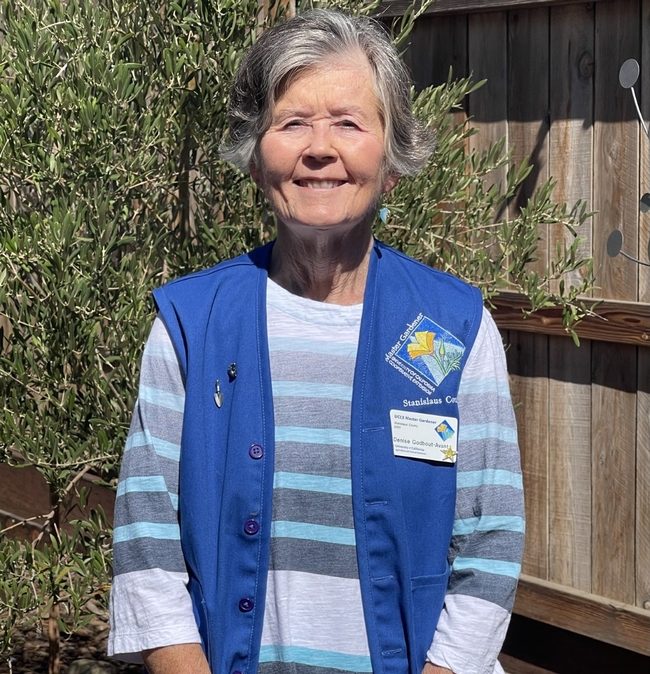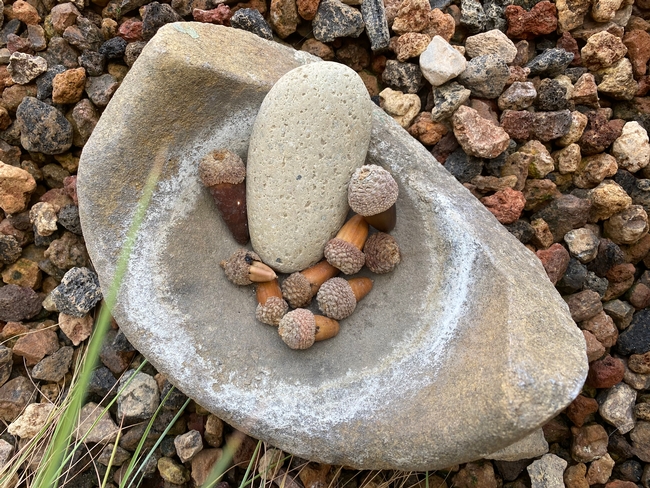
Valley Oak (Querus lobata):
The acorns were a staple food, which was leached (rinsed with water) to remove the bitterness, and ground into flour with mortar and pestles. The ground acorns were used in stews/soups, pancakes/tortillas, mush, or layered into pits and cooked with other plants and meats. Oak galls were squeezed to make a blue-black ink for tattoos and tannins were used to make dyes and decorate animal skins.
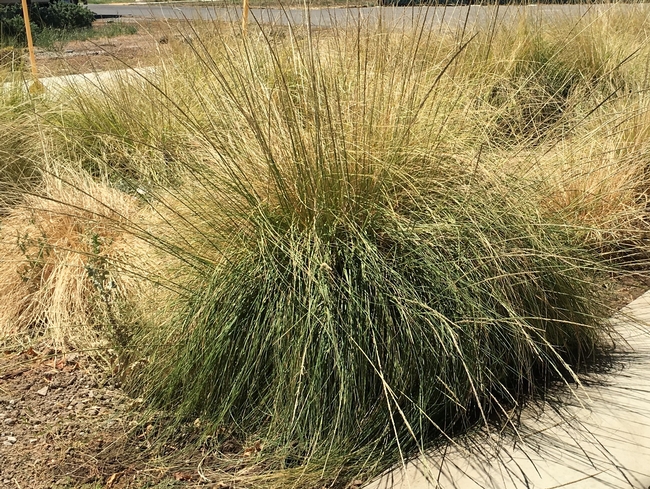
Deer Grass (Muhlenbergia rigens):
A major grass for creating beautiful, sometimes water-tight baskets to cook food, to carry and store food and other items. Stalks were generally harvested in the spring when easy to pick, then wrapped to keep straight and allowed to cure for a year. They were often soaked prior to weaving into basket. About 1600 stalks would be needed to make one basket.
One of the most beautiful California grasses, this easy-to-grow plant attracts butterflies in the spring with its cream-colored flowers and seed-eating birds in the summer.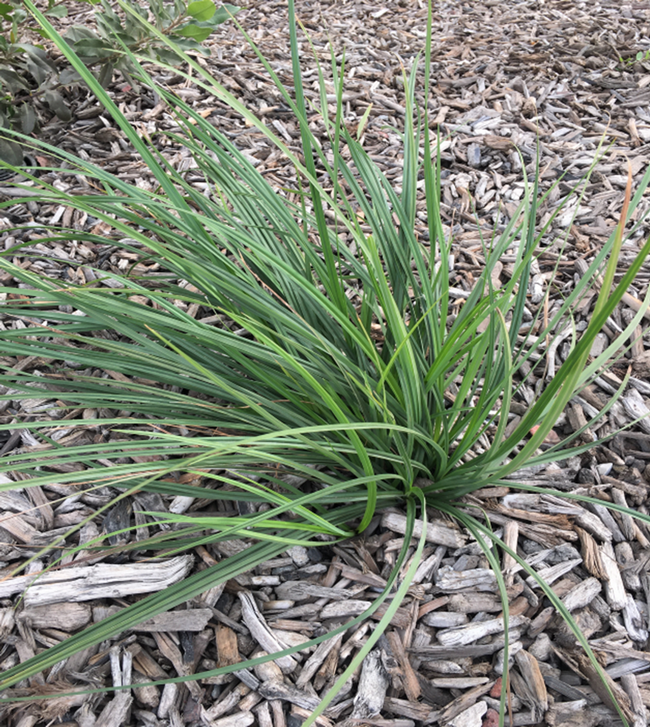
Santa Barbara Sedge (Carex barbarae):
The rhizomes (underground stems which generally grow horizontally) provided the strongest threads for basket making. The people would manage the rhizome growth by cleaning the soil of anything that might obstruct the growth (i.e., rocks) to allow the rhizomes to grow long and straight. An evergreen grass, the summer flowers range from cream, red and purple colors, which attract butterflies.
Toyon, aka California Holly (Heteromeles arbutifolia):
The wood from this sturdy shrub had many uses including tools, games/toys, fuel for smoking fish, and religious ceremonies. The red berries produced in the fall which were eaten after roasting over coals or dried in the sun.
An evergreen shrub, the summer white flowers attract bees and butterflies. Birds love the berries.
Blue Elderberry (Sambucus cerulea):
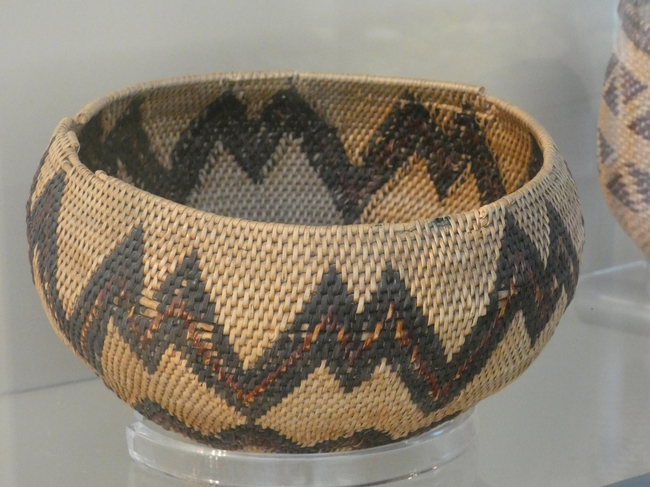
This tough, easy-to-grow shrub or tree is dormant in the winter. The spring and summer blooming cream or yellow flowers attract bees and butterflies, with their berries being an important food source to many birds.
Manzanita (Arctostaphylos manzanita):
Its distinctive red wood which was sometimes used to dry and smoke fish. The fruit was gathered in summer, then dried and ground to make coarse meal which would be mixed with a little water during winter months or made biscuits. They would make tea with the berries and tips of the branches, which apparently was a pleasant drink.
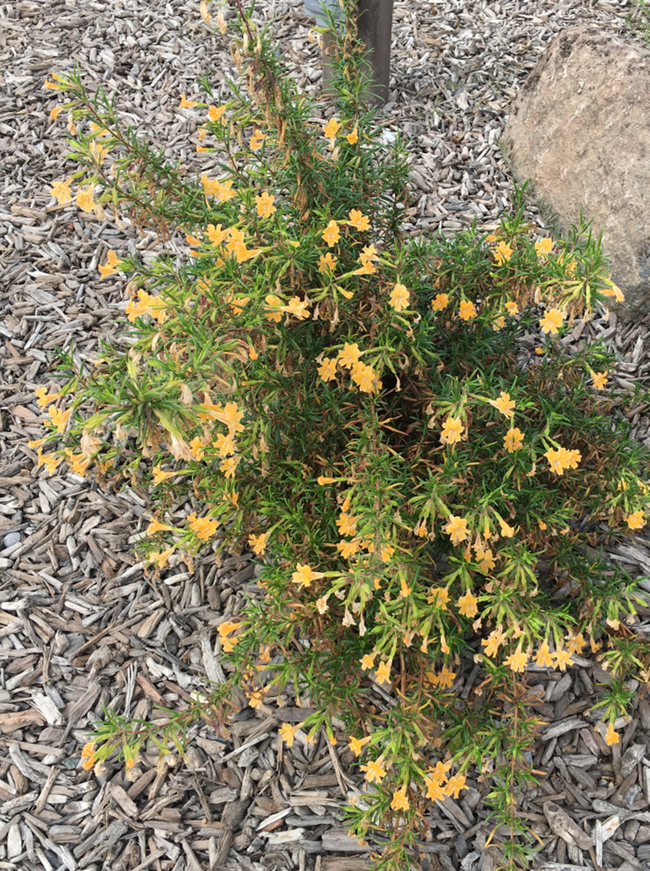
Sticky Monkey Flower (Mimulus aurantiacus):
The seeds were used as a food source. They were gathered, parched, ground, and added to foods or eaten by the handful. Flowers were used as décor after drying, made into wreaths, and used in religious ceremonies. The roots and leaves were used for medicinal purposes.
This drought-tolerant, evergreen shrub blooms in the spring, summer, and fall. The bright yellow tubular flowers attract hummingbirds, bees, and butterflies. Autumn seeds attract small birds.
Whenever I see any of these California native plants, I think of how the indigenous people of California used these plants over thousands of years. By growing them in our gardens, we honor that history, help the survival of these plants which provide food sources for so many birds, bees, and butterflies, reduce water usage, bring variety to our gardens, and joy to our spirits with their beauty.
Learn more at the Library - Take a free class!
This September, our UC Master Gardeners will present on the topic, "CA Native Plants" at 9 Stanislaus County Library locations. Visit our Calendar at https://ucanr.edu/sites/stancountymg/Calendar/ for dates, times, and locations.
Upcoming Workshop
On Saturday, October 7, 2023, we are offering our "The New Front Yard" workshop. Topics include drip irrigation, converting your yard to native plants, and how to garden for year-round bloom! Stay tuned for the registration announcement.
Resources:
- Enough For All: Foods of My Dry Creek Pomo and Bodega Miwuk People by Kathleen Rose Smith
- The Real California Cuisine: A Treatise on California Native-Plant Foods by Judith Larner Lowry
- Tending the Wild: Native American Knowledge and the Management of California's Natural Resources by M. Kat Anderson
- Indian Summer: A True Account of Traditional Life Among the Choinumni Indians of California's San Joaquin Valley
- Great Valley Museum of Natural History at Modesto Junior College's exhibit on Yokuts
- California Native Plant Society: https://www.calscape.org/
Acknowledgment: Lillian Vallee, English professor emeritus, Modesto Junior College, who has shared her passion and knowledge with me over the years of California native plants and their historical uses by the California native people.
Denise Godbout-Avant has been a UC Cooperative Extension Master Gardener in Stanislaus County since 2020.

